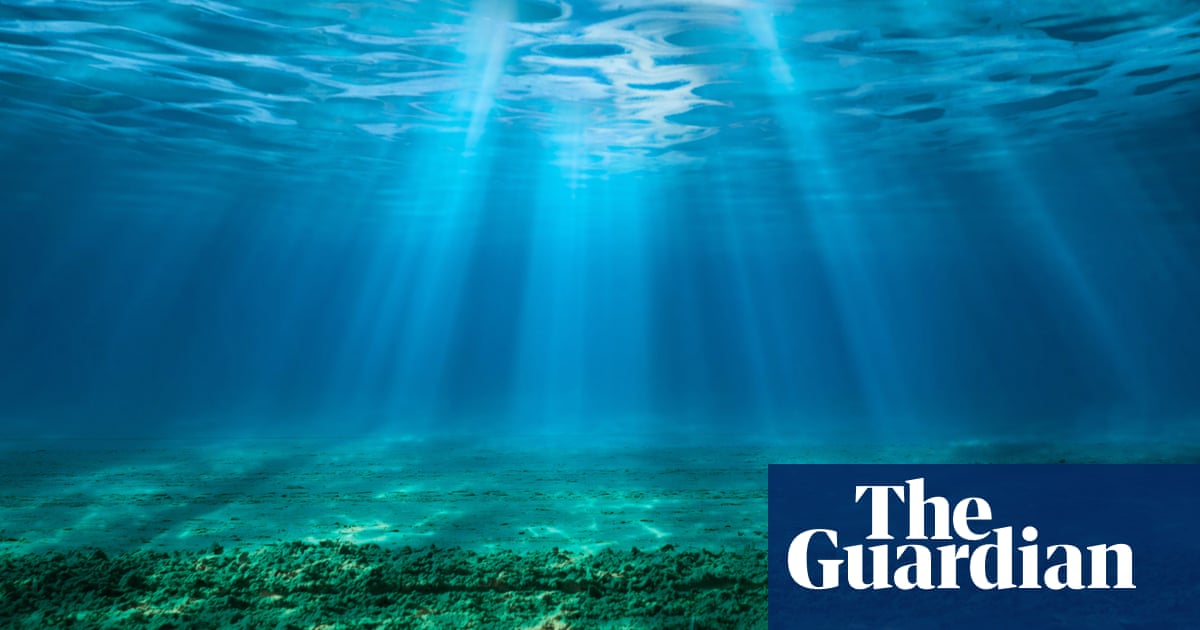As an eternal testament of humanity, plastic bags, cheap clothes and chicken bones are not a glorious legacy. But two scientists exploring which items from our technological civilisation are most likely to survive for many millions of years as fossils have reached an ironic but instructive conclusion: fast food and fast fashion will be our everlasting geological signature.
“Plastic will definitely be a signature ‘technofossil’, because it is incredibly durable, we are making massive amounts of it, and it gets around the entire globe,” says the palaeontologist Prof Sarah Gabbott, a University of Leicester expert on the way that fossils form. “So wherever those future civilisations dig, they are going to find plastic. There will be a plastic signal that will wrap around the globe.”
Fast food containers dominate ocean plastic, but aluminium drinks cans will also be part of our legacy. Pure metals are exceptionally rare in the geological record, as they readily react to form new minerals, but the cans will leave a distinct impression.
“They’re going to be around in the strata for a long time and eventually you would expect little gardens of clay minerals growing in the space where the can was. It’s going to be a distinctive, new kind of fossil,” says the geologist Prof Jan Zalasiewicz, a leading proponent of the Anthropocene as a new geological epoch that reflects the impact of modern humanity on the planet, who with Gabbott has written a book on technofossils, Discarded.
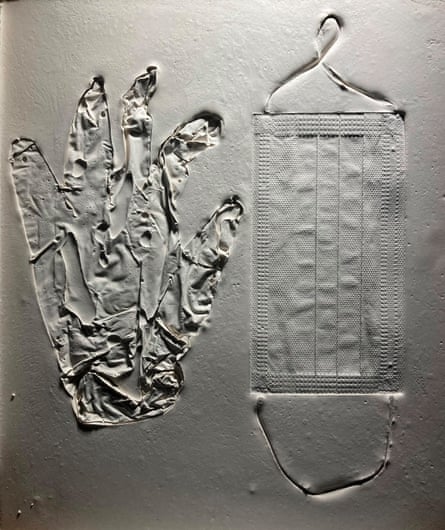
Another fast food staple, chicken, is also destined for immortality. Bones are well known as fossils, but while those of modern broiler chickens are fragile – they are bred to live fast, dying fat and young – the sheer volume will ensure many survive into the geological record.
At any moment, there are about 25 billion live chickens in the world, vastly more than the world’s most abundant wild bird, say Gabbott and Zalasiewicz, making them likely to be the most abundant bird in all of Earth’s history. The sudden appearance of vast numbers of a monstrous bird five times bigger than its wild forebear will certainly strike future palaeontologists.
Clothes will also make an abrupt entry into humanity’s fossil record. For millennia, clothes were made from natural and easily rotted materials such as cotton, linen and silk. Today, the world’s growing population often wears mass-produced synthetic garments that are rapidly dumped.
“We are making them in ridiculous amounts,” says Gabbott – about 100bn garments a year, double the number 20 years ago. “People would be surprised just how many clothes are actually out there in the environment as well. I work to clean rivers in the city of Leicester and about a quarter of the stuff that we take out is clothing. We also stick them into landfills, which are like giant mummification tombs.” As the geologists say in their book: “It is already clear that much of modern fashion will end up being, in the deepest possible sense, truly timeless.”
The last of the signature technofossils is also the most solid example: concrete. It is already essentially a rock, so it is readily preserved, and it exists in colossal quantities. Enough concrete is cast each year to provide four tonnes to every person on Earth, adding to the existing 500bn tonne stockpile.
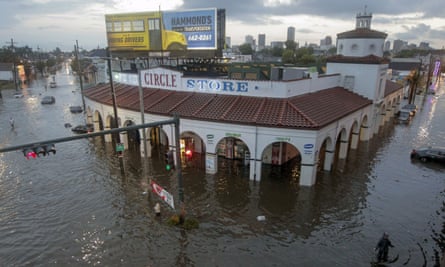
Zombie cities
All fossils require a bit of luck to be preserved. Usually that means being buried under sediments in lakes and seas. So sinking cities, such as New Orleans, are where colossal concrete fossils are likely to be formed.
Half of the city is already below sea level and Gabbott and Zalasiewicz’s prognosis is stark: “It is a zombie city, which will die by drowning, probably later this century, and so it is ripe for fossilisation.” Skyscrapers, building foundations, paving slabs, sewer lining and the city’s sea walls will all be candidates for preservation.
An unambiguous sign of a human civilisation will be our own bones, and those of us who are buried will have already taken the first step to fossilisation. But again, only those entombed in sinking places are likely to be preserved.
“Mountain burial grounds won’t last very long,” says Zalasiewicz. “But if you’re in the Mississippi [River] delta, or the Netherlands, or the Yangtze delta, the burial grounds there will, by and large, survive.” Even so, future palaeontologists are more likely to find the remains of our farm livestock, which vastly outweigh us.
To assess which human detritus will survive, Gabbott and Zalasiewicz make frequent analogies with existing fossils. Graptolites, a long-extinct group of small filter-feeding marine animals and the organic tubes they lived in, are common fossils from about 500m years ago. “The tubes seem to have turned into something plastic and some, when you extract them from the rock, are still springy – it’s extraordinary,” says Zalasiewicz.
The cell walls of green algae provide another plastic analogue. “Fossils that are nearly 50m years old are made of this stuff that is chemically indistinguishable from polyethylene,” says Gabbott. The geologists conclude: “Our throwaway plastics look likely to persist on Earth pretty much for ever.” For ever is a long time and in reality all fossils will only last as long as the planet does, but it will take about 5bn years for the sun to engulf the Earth.
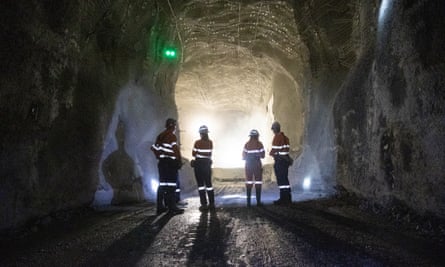
Underground scars
Fossils are not just objects left behind, but also the traces of life’s activity written into the rocks and humanity is leaving a gigantic footprint. For example, we have drilled more than 50m kilometres of oil and gas wells, each piercing down through geological strata.
There have also been about 1,500 nuclear weapons tests conducted underground. While relatively rare, the results were geologically spectacular: large spherical caves lined with melted rock that collapsed into a mass of radioactive rubble and are surrounded by a complex web of fractures. Along with mines and other boreholes, “this global rash of underground scars is pretty much indelible”, say Gabbott and Zalasiewicz.
Just as enduring but far more subtle will be the toxic chemical signal left by humanity, not least the aptly named “forever chemicals”, such as PTFE. The metal in a non-stick frying pan is likely to dissolve away over millions of years underground, say the geologists, but the PTFE coating will persist as a thin flexible film.
Humanity has created many near-indestructible chemicals, such as dioxins and DDT. Given that similar molecules produced by bacteria have been found in rocks that are 1,600m years old in Western Australia, these chemicals appear to be here to stay. “These forever chemicals are literally everywhere,” says Gabbott. “Then they get into sediment, and then they just sit there.”
Another part of the surreptitious signature of humanity is the presence of radioactive elements sprinkled around the world by nuclear bomb tests above ground, largely between 1952 and 1963. These form such a stark signal that they were judged the best candidate to indicate the dawn of the Anthropocene.
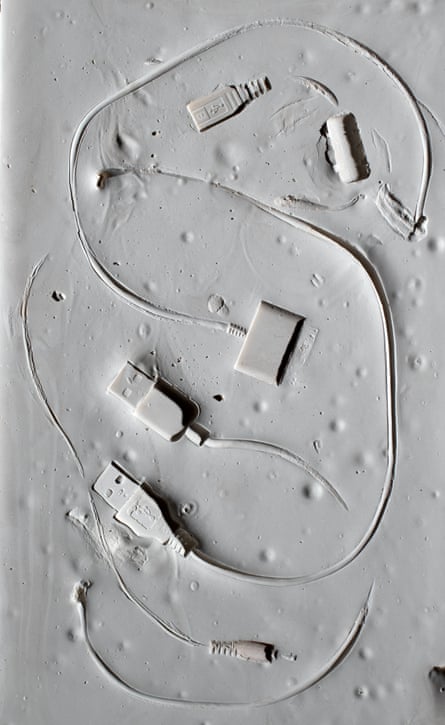
These chemical signs may seem cryptic and unlikely to be unearthed in the far future. But geologists found a similar trace that accompanied the demise of the dinosaurs: thin sediments enriched in iridium, an element found in meteorites. “The iridium spike is not at all obvious, unless you’ve got a super-duper spectrometer and sample just the right level. And yet we found it,” says Zalasiewicz.
Our digital age is likely to leave less of a trace than the centuries when knowledge was stored on paper. Ancient fossil leaves and trees show that paper has a surprisingly high ability to be fossilised, and the graphite used in pencils is also robust. “It is endearing to think that it may be the fossilised scribblings of children that may survive best of all: a portrait of a family outside a house, perhaps, with the sun shining and a rainbow arcing across the sky,” say Gabbott and Zalasiewicz.
Computer chips, though numerous, are tiny, and silicon is highly reactive with oxygen, making them unlikely to be significant as future fossils. But the wiring in electronic devices may well catch the eye, as the minerals that form from copper are bright and beautifully coloured, from azurite to malachite to bornite. Solar panels may also achieve immortality thanks to their distinctive shape and the sheer volume being produced.
Their exploration of future fossils has led Gabbott and Zalasiewicz to draw some conclusions. One is that understanding how human detritus could become fossils points towards how best to stop waste piling up in the environment.
“In the making of fossils, it’s the first few years, decades, centuries and millennia which are really crucial,” says Zalasiewicz. “This overlaps with the time in which we have the capacity to do something about it.”
Gabbott says: “The big message here is that the amount of stuff that we are now making is eye-watering – it’s off the scale.” All of the stuff made by humans by 1950 was a small fraction of the mass of all the living matter on Earth. But today it outweighs all plants, animals and microbes and is set to triple by 2040.
“This stuff is going to last millions of years, some releasing its toxins and chemicals into the natural world,” she says, raising serious questions for us all: “Do you need that? Do you really need to buy more?”
Discarded: How Technofossils Will Be Our Ultimate Legacy is published by Oxford University Press

 3 months ago
69
3 months ago
69









